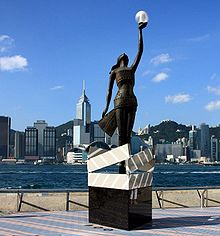Category III
| Cinema of Hong Kong | |
|---|---|

|
|
| Number of screens | 204 (2011) |
| • Per capita | 3.1 per 100,000 (2011) |
| Produced feature films (2005-2009) | |
| Total | 56 (average) |
| Number of admissions (2010) | |
| Total | 22,500,000 |
| • Per capita | 3.2 (2010) |
| Gross box office (2014) | |
| Total | HK$1.65 billion |
The cinema of Hong Kong (Chinese: 香港電影) is one of the three major threads in the history of Chinese language cinema, alongside the cinema of China, and the cinema of Taiwan. As a former British colony, Hong Kong had a greater degree of political and economic freedom than mainland China and Taiwan, and developed into a filmmaking hub for the Chinese-speaking world (including its worldwide diaspora), and for East Asia in general.
For decades, Hong Kong was the third largest motion picture industry in the world (after Indian cinema and Hollywood) and the second largest exporter. Despite an industry crisis starting in the mid-1990s and Hong Kong's return to Chinese sovereignty in July 1997, Hong Kong film has retained much of its distinctive identity and continues to play a prominent part on the world cinema stage. In the West, Hong Kong's vigorous pop cinema (especially Hong Kong action cinema) has long had a strong cult following, which is now arguably a part of the cultural mainstream, widely available and imitated.
Unlike many film industries, Hong Kong has enjoyed little or no direct government support, through either subsidies or import quotas. It is a thoroughly commercial cinema: highly corporate, concentrating on crowd-pleasing genres like comedy and action, and relying heavily on formulas, sequels and remakes.
...
Wikipedia
